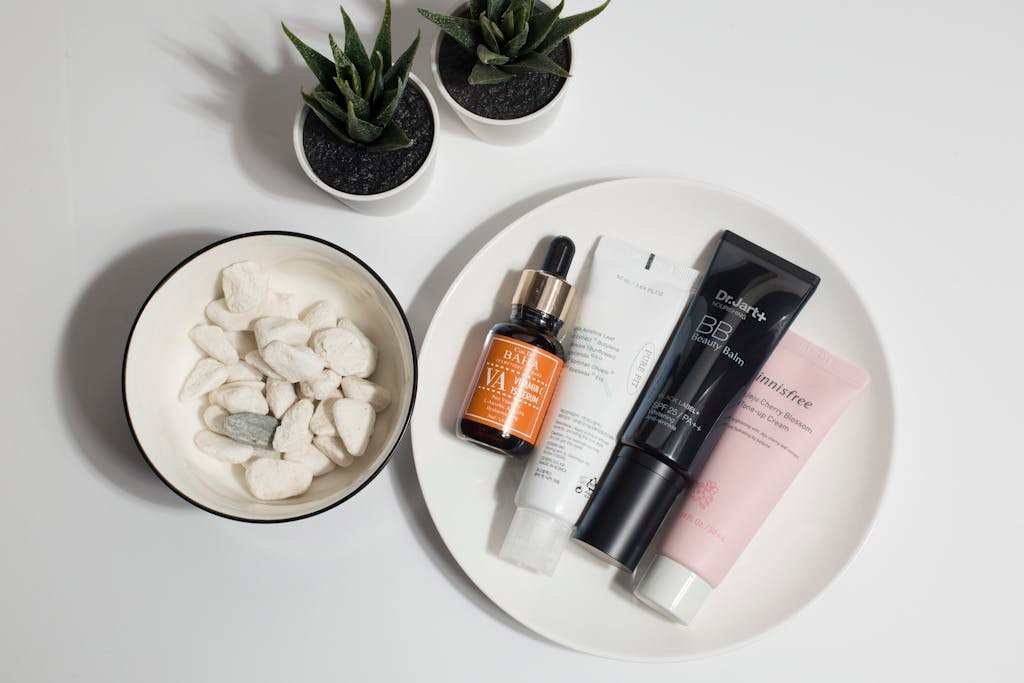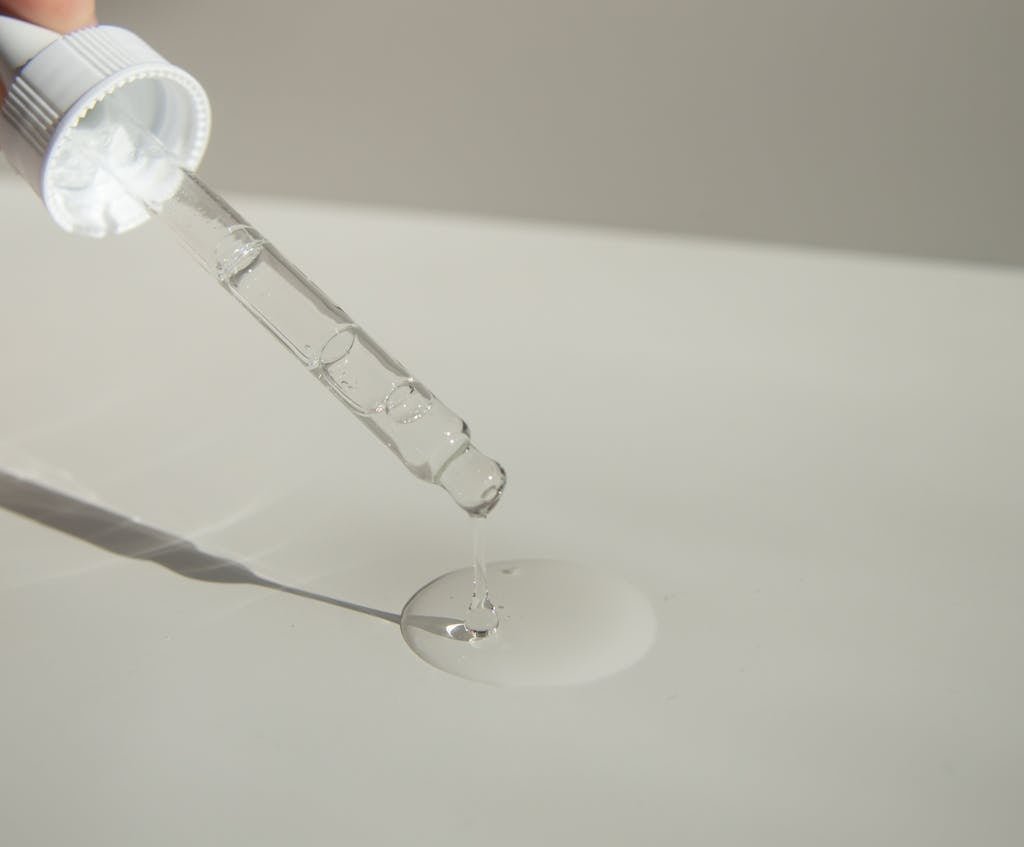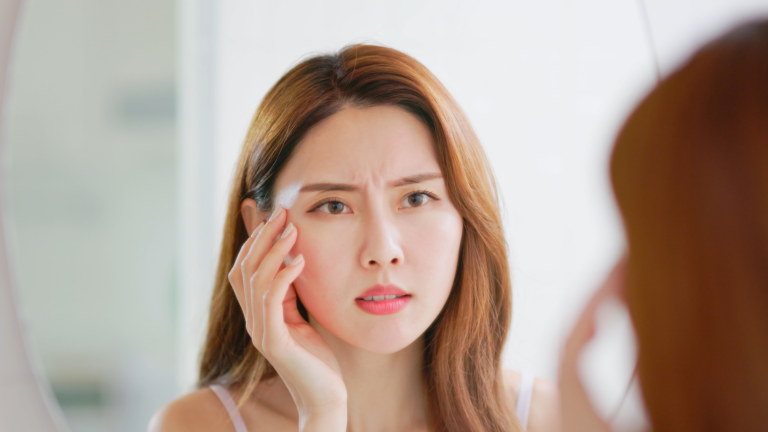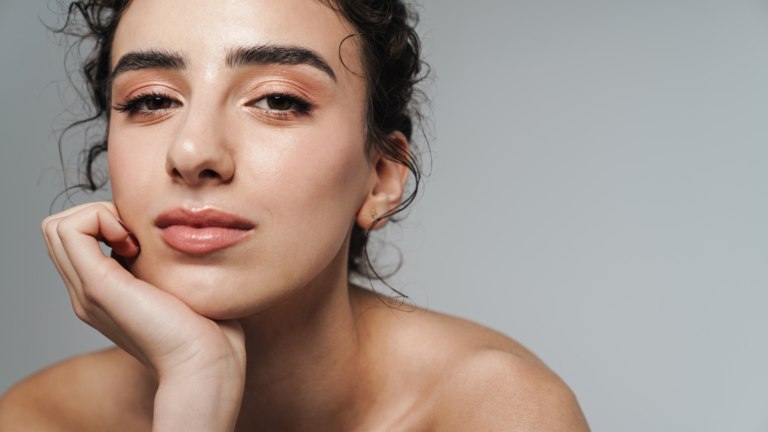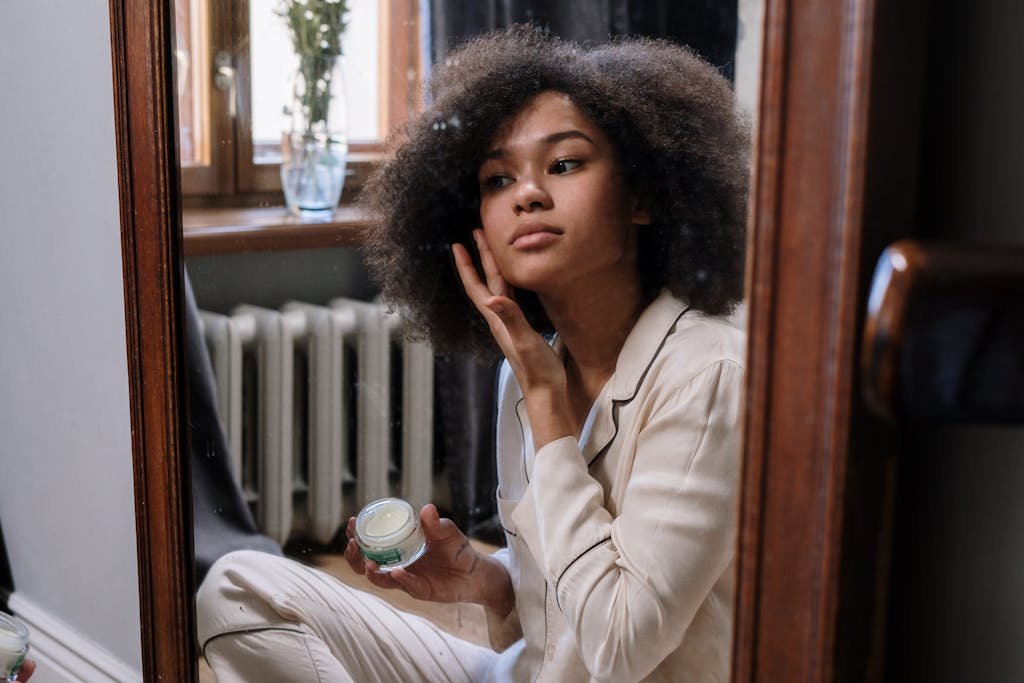The Ultimate Guide To Combining Active Ingredients: Retinol, Vitamin C, Niacinamide, & More!
This post may contain affiliate links. That means that if you click on a link and purchase something I recommend, I will receive a small commission at no extra cost to you. As an Amazon Associate, I earn from qualifying purchases. This helps keep my website up and running and is very appreciated. Thank you for your support! Disclaimer
Hi everyone, so yesterday, I was scrolling through this skincare forum on Reddit and came across this post about combining active ingredients. A lot of people in the comments were confused about how to incorporate various actives into their skincare routine. I also noticed people who are confused about what an active is altogether. So what better day than today to address this topic?
In today’s article, I’ll simplify things so you can easily grasp the differences between active ingredients and learn how to combine them effectively. By the end of this piece, you’ll feel confident in identifying and utilizing these ingredients in your skincare routine.
If you don’t have time to read this post right now, why not save it for later?
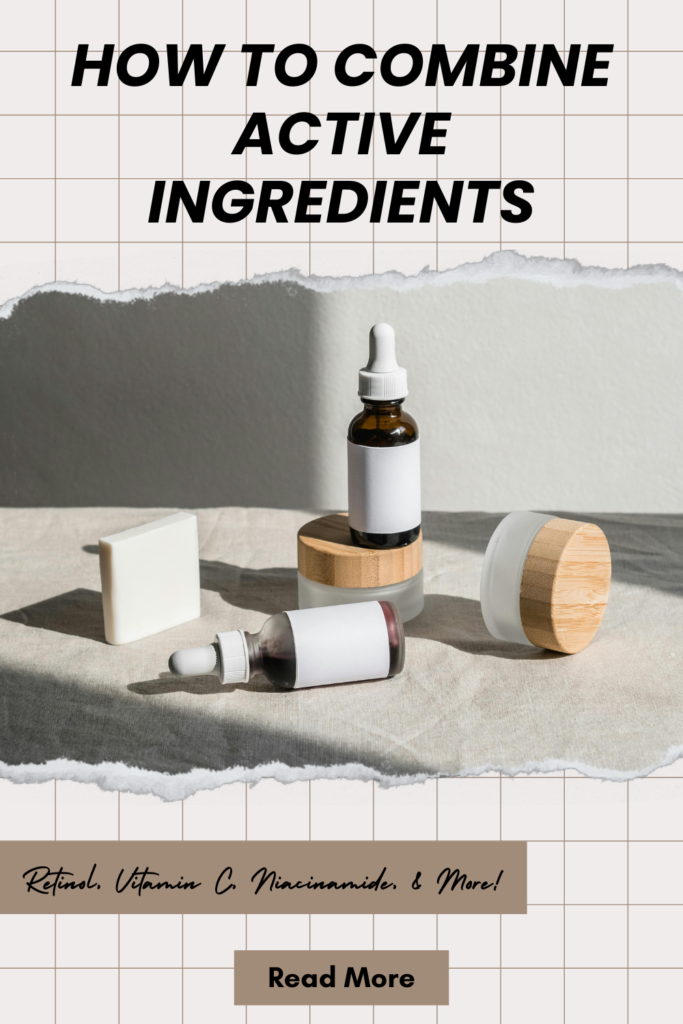
Combining Active Ingredients
what is an active ingredient?
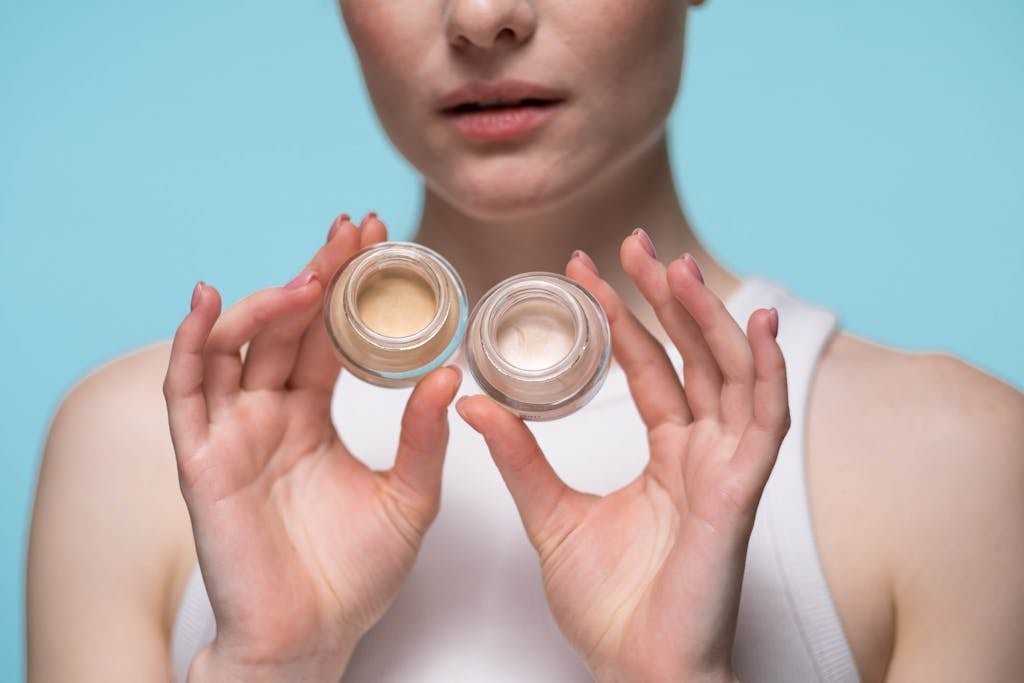
Before delving into the array of active ingredients available in skincare products, let me explain to you what an active ingredient actually is. Think of this simple analogy as a Pizza. The basic pizza crust represents the inactive ingredients, serving as the supporting structure. While the toppings are what I would call the active ingredients because they change the overall taste and experience of the pizza that you’re about to eat. Same goes for your skincare.
Active ingredients are, by definition, self-communicating ingredients that directly impact the structure and function of your skin. Sometimes, they’re included to offer specific therapeutic benefits for your skin.
what’s the difference between an active ingredient and an active drug?
What sets apart an active ingredient from an active drug? It is all based on claims made about the product. If a product asserts that it can treat or prevent a specific medical condition . The brand must list the ingredient targeting that condition as an active drug. You’ll usually find it in the form of a drug fact label. Take salicylic acid, for example. When it’s aimed at treating acne, it’s often considered a drug because it addresses that condition.
However, if a product isn’t claiming to treat or prevent a medical condition but rather serves as a cosmetic to enhance skin appearance without making medical claims, the company isn’t obligated to distinguish between active and inactive ingredients or include a drug fact label. Salicylic acid is a prime example of this.
Let’s take two products as examples, both containing two percent salicylic acid. One is a BHA acne spot treatment gel by First Aid Beauty. Checking the back of the box reveals a drug fact label with active ingredients listed, followed by inactive ones. On the other hand, Drunk Elephant’s TLC Sukari Babyfacial also contains two percent salicylic acid, but without any acne claims on the packaging. There is in no way telling you can treat your acne with this product although it could potentially help with acne, the product doesn’t assert this. Consequently, there are no drug fact labels anywhere on the packaging, and they don’t even separate the active ingredients from the inactive ones.
what is an inactive ingredient?
There’s a huge misunderstanding about inactive ingredients in skincare products. Contrary to what many believe, . Not all inactive ingredients are actually useless. In fact, most inactive ingredients are there to support the active ingredients, helping them do their job more efficiently and productively. Many of the inactive ingredients found in skincare products actually offer benefits for your skin.
But one example of an active ingredient that can actually be very active is alcohol. Depending on how it’s used in a formulation, it can either have a strong impact or be present in a very small amount to help other ingredients penetrate the skin. So, with that being said, it’s quite unfair to only to value the so-called “active” ingredients because it’s really the story as a whole and the formulation as a whole that makes the biggest difference.
More often than not, when you experience allergies or sensitivities to skincare products, it’s not just because of the active ingredients. It could be due to various factors, whether it is the preservatives, the fragrances, or even the silicones in the formulation itself. Sometimes, it’s these supporting materials that cause allergic reactions rather than the active ingredient alone.
basis of your skincare routine

Before I jump into what you can and cannot mix, I just want to put a disclaimer right here and emphasize on it: everybody’s skin is different, So pay attention to how your skin reacts and understand its needs before combining any ingredients This step is crucial for ensuring the best results.
The biggest piece of advice that I have for you, other than the fact that the goal isn’t about about using the highest concentration of ingredients on your skin . Consistently using the right ingredients over time is key to achieving optimal results.
Secondly, get your skincare routine nailed down , meaning make sure you have the right cleanser for your skin, the right moisturizer for your skin, and the right sunscreen for your skin. These three essentials form the foundation of any good skincare routine. Once you have your basics sorted, you can gradually introduce other active ingredients.
Keep in my mind when incorporating a new active ingredient, give your skin time to adjust before introducing another. This gradual approach helps your skin acclimate and ensures better compatibility between ingredients.
The six holy grail of actives:
I’m going to break this down for you in a very simple manner, starting with the six top ingredients that I could think of. These are often the ones that come up in Google searches and in the comment section.
- Retinoids
Vitamin A—whether it’s in the form of retinol, retinoids, tretinoin (prescription), or other derivatives—is a key ingredient. These components not only facilitate cellular turnover but also aid in reversing the signs of sun damage and the effects of aging. They work wonders, infusing your skin with a luster and radiance that truly revitalizes your complexion.
- Vitamin B3 (Niacinamide)
Number two on the list is Vitamin B3, which is also known as niacinamide. Now, niacinamide is an ingredient that is relatively well tolerated by many different people. It helps to calm inflammation and to restore your skin barrier.
- Vitamin C
Next on the pyramid is Vitamin C, in its pure and active form, is known as ascorbic acid. However, there are numerous vitamin C derivatives available. In essence, vitamin C is a potent antioxidant that proactively protects your skin from daily damage caused by environmental aggressors. Additionally, it serves as a great booster for certain ingredients in your sunscreens, enabling them to work more effectively. But, we’ll delve deeper into vitamin C in just a moment.
- AHAs (Glycolic acid, Lactic acid, Mandelic acid)
Next are alpha hydroxy acids. We’re talking about glycolic, lactic, and mandelic acid. These are exfoliating acids that work on the surface of the skin. In the process, they also help with cellular turnover and collagen production, as well as brightening enhancements. They tend to be water-soluble.
- BHAs (Salicylic acid)
On number five, we’ve got the beta hydroxy acid, salicylic acid, which is oil soluble. They are most classically used for people with acne and clogged pores.
- Benzoyl peroxide
And lastly, there’s benzoyl peroxide. Benzoyl peroxide is one of those ingredients that really kills the active bacteria usually implicated within the acne-producing process. It is also an ingredient that helps with exfoliating, reducing sebum production, and decreasing inflammation at certain percentages.
How to Combine Active Ingredients? dos & don’ts
- Benzoyl peroxide + Retinol
Starting with Vitamin A, all of the retinol, retinoids, and everything in between, one active I would tell you to watch out for benzoyl peroxide. Benzoyl peroxide is an oxidizing agent, while retinol is an antioxidant. When used together, they can counteract each other, making them useless and potentially irritating for your skin.
So how do you combine them in your overall routine? I’ll tell you to spread them out and use the retinols at night, saving the benzoyl peroxides for nights that you’re not using the retinols.
Personally, my preference of choice when it comes to benzoyl peroxide is in the form of a cleanser. I like to apply the cleanser to my face, let it sit for five minutes or so, and then jump in the shower to wash it off. This way, I’m really washing it off completely without any residue left behind, and I will not be bleaching my towels. Plus, I’m using them on a night that I’m not using my retinol in order to avoid all of the other drama I just mentioned.
- Vitamin A + Vitamin C
When it comes to Vitamin A and Vitamin C, there are some differences in how they work with your skin. Vitamin C usually requires an acidic pH, whereas Vitamin A does not. However, it’s important to note that we cannot generalize this because there are different types of Vitamin C, including all the Vitamin C esters. So, in some cases, you can actually combine Vitamin C and Vitamin A at the same time in your skincare routine, which might help boost collagen production.
If you’re using a form of Vitamin C called ascorbic acid, which works best in an acidic environment, it’s a good idea to use it separately from your Vitamin A products. . I actually much prefer that you spread them out. I use Vitamin C ascorbic acid in the morning before my sunscreen. However, if I am using a Vitamin C ester like tetrahexyldecyl ascorbate, I don’t have any issues using it at night before applying my retinol.
- Vitamin A + AHA/BHA
Combining Vitamin A and alpha hydroxy acids (AHAs) is a bit controversial—not gonna lie I’ve gotten a lot of heat for recommending this combo often . But let me clarify, that this combo is for veteran and veteran ONLY, this is not for beginners .
If you’re experienced with skincare, you can absolutely tolerate an alpha hydroxy acid and a retinol in the same routine, as long as your skin is used to the retinol. Sometimes, I myself will go down on the concentration of the retinol that I’m using on the nights when I’m also using an AHA to exfoliate. So, you have to learn all about being flexible and listening to your skin—knowing when it can handle more and when to ease off a bit.
The same applies to beta hydroxy acids like salicylic acid. If you have acne-prone skin, combining them with retinol can help clear pores, balance oil production, and reduce breakouts. But again, you must be used to the retinol, or else your face will blow off— trust me it’s not a good thing.
- Vitamin C + Vitamin E + ferulic acid
When it comes to Vitamin C, a great duo to pair it with is Ferulic Acid and Vitamin E. As they help stabilize Ascorbic Acid (Vitamin C), boosting its power and effectiveness. So It’s a smart choice!
- Vitamin C + Niacinamide
Vitamin C and niacinamide—now, this combination gets a lot of heat on the internet. leaving many puzzled. This confusion really stems from the fact that when these two ingredients are mixed, their clear solutions turn yellow, therefore leaving people ask themselves, “Hey, did it lose sensitivity? Is it more irritable? Did it lose efficacy? Am I wasting my money?”
However, studies have shown that they actually help boost each other’s effects in vivo . In vitro (laboratory tests) might be a different story, but the vitro results were never recreated in vivo (real-world studies), meaning on human skin. So, I would take this one and bust that myth and enjoy the combination of niacinamide and vitamin C without worry.
- Vitamin C + SPF
And lastly, Vitamin C and SPF. This is a personal favorite of mine. As a pilot, I often wake up in different climates and environments. So, every single morning, depending on the climate I’m in, if I’m skipping my moisturizer, I will not skip the Vitamin C underneath my sunscreen. Because together, they work beautifully to help protect your skin throughout the day and minimize any damage that may or may not form if you are protected.
- Niacinamide /Vitamin B3 combos
This one can actually be paired very well with pretty much everything. The only alert that I have regarding niacinamide is to keep the percentage here to three to five percent. You do not need to have it at more than that.
- AHA + Vitamin C
Alpha hydroxy acids and vitamin C – this combination is quite intriguing because many people are hesitant to mix them. The truth is, both are formulated in an acidic pH, so they tend to enhance each other’s effects. However, it’s essential to be cautious about this combination if you have sensitive skin. The moral of this story is simple: if you have sensitive skin, always patch test before blending ingredients. Otherwise, feel free to experiment with various skincare ingredients, as long as your skin barrier remains unharmed.
- AHA + BHA
The same goes for alpha hydroxy acids and beta-hydroxy acids.
Now, why would you want to combine them if they’re all acids? Well, because they deliver different things. Alpha hydroxy acids are much better geared towards brightening your skin and smoothing out your texture, whereas beta hydroxy acids go deeper into the oil glands to empty out your pores.
So, if you’re someone who is acne-prone or has a lot of clogged blackheads or whiteheads but is also looking to brighten your skin, you can definitely marry both of these ingredients together, as they’ll probably work stronger for you. Just be aware that you do not need a crazy percentage when combining them.
That’s why sometimes the Drunk Elephant product, the T.L.C. Sukari Babyfacial in particular, freaks me out because it is a 25% complex of alpha hydroxy acids plus a 2% salicylic acid, so it might be a little bit too strong to use on a regular basis.
the Bottom Line
So, I did the roundup of what you can and cannot marry together and what should just stay separated for everyone’s safety and good, I hope this article was helpful in clarifying this subject of combining active ingredients
I think the moral of the story here is: you can be adventurous in mirroring your skincare ingredients, but number one, have a basic skincare routine down. Number two, Don’t go overboard with super high concentrations of ingredients. And number three, when in doubt, always do a patch test first! Pick a discreet spot. If you want to be wild, pick the front of your cheek. I mean, you do you, but test it out before blowing your whole face. Dip your toes before diving in.
Lastly, my readers’ feedback matters to me. If you have any questions or thoughts, please leave a comment below.

